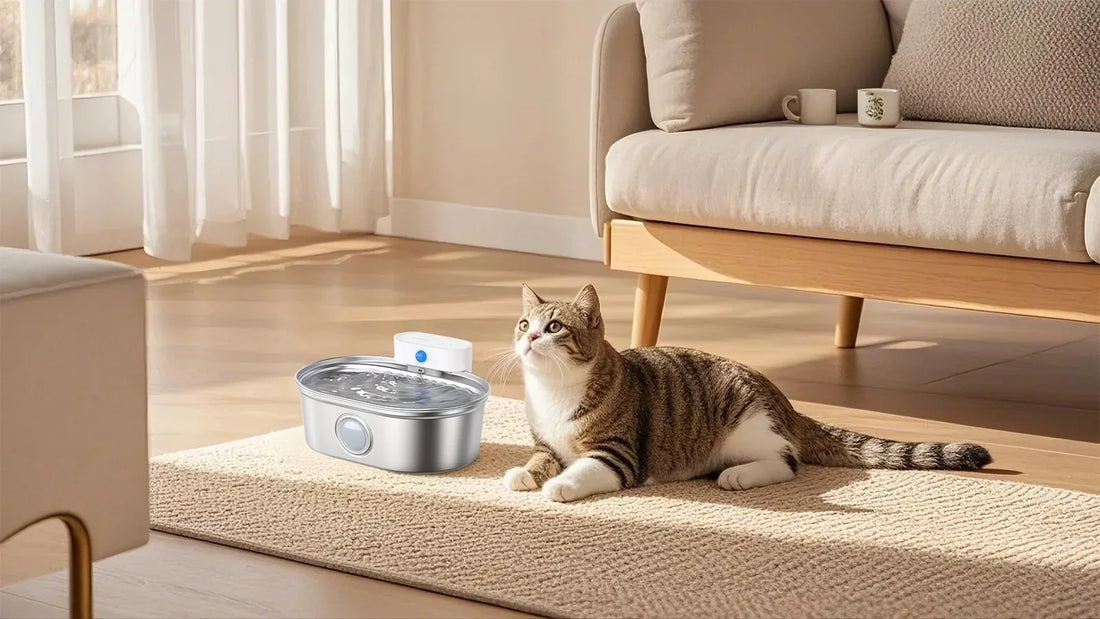Keeping your dog's water bowl clean is more than just a chore—it's a crucial part of ensuring your furry friend stays healthy and happy. Many pet owners overlook this simple yet essential task, but neglecting it can lead to a host of problems, from bacterial growth to potential health risks for your pet. In this comprehensive guide, we'll explore how often you should wash your dog's water bowl, why it matters, and tips for maintaining a hygienic drinking environment for your canine companion.
Why Cleaning Your Dog's Water Bowl is Important
Your dog's water bowl is a breeding ground for bacteria, mold, and other harmful microorganisms. Every time your dog drinks, saliva, food particles, and dirt can accumulate in the bowl. Over time, this buildup creates an environment where bacteria can thrive. Regular cleaning helps prevent the growth of these harmful organisms, reducing the risk of infections and illnesses in your pet.
Additionally, a dirty water bowl can deter your dog from drinking enough water, leading to dehydration. Ensuring the bowl is clean and fresh encourages your dog to stay hydrated, which is vital for their overall health.
How Often Should You Wash Your Dog's Water Bowl?
The frequency of washing your dog's water bowl depends on several factors, including the type of bowl, your dog's habits, and the environment. Here are some general guidelines to follow:
- Daily Cleaning: At a minimum, rinse the bowl with hot water and mild soap every day. This removes any visible debris and prevents bacterial buildup.
- Thorough Cleaning: At least once a week, give the bowl a deep clean using a pet-safe disinfectant or a mixture of vinegar and water. Scrub the bowl thoroughly to remove any stubborn residue.
- After Contamination: If you notice food particles, dirt, or other contaminants in the bowl, clean it immediately. This is especially important if your dog has been playing outdoors or eating messy treats.
Signs Your Dog's Water Bowl Needs Cleaning
Sometimes, it's not always obvious when your dog's water bowl needs a wash. Here are some signs to watch out for:
- Slime or Film: If you notice a slimy film on the bowl's surface, it's time for a thorough cleaning.
- Unpleasant Odor: A foul smell coming from the bowl indicates bacterial growth and requires immediate attention.
- Visible Debris: Food particles, dirt, or hair in the bowl are clear indicators that it needs to be cleaned.
Tips for Maintaining a Clean Dog Water Bowl
Keeping your dog's water bowl clean doesn't have to be a daunting task. Here are some practical tips to make the process easier and more effective:
- Choose the Right Material: Opt for bowls made from stainless steel or ceramic, as they are easier to clean and less likely to harbor bacteria compared to plastic bowls.
- Use Pet-Safe Cleaners: Avoid harsh chemicals that could harm your dog. Instead, use pet-safe disinfectants or natural cleaning solutions like vinegar and water.
- Regular Inspections: Make it a habit to inspect the bowl daily for any signs of contamination or wear and tear.
- Replace When Necessary: If the bowl becomes scratched, cracked, or difficult to clean, it's time to replace it to ensure your dog's safety.
The Role of Water Quality in Your Dog's Health
While cleaning the bowl is essential, the quality of the water you provide is equally important. Always ensure your dog has access to fresh, clean water. Avoid using water from questionable sources, such as stagnant ponds or untreated tap water, as it may contain harmful contaminants.
Consider using a water filter to remove impurities and provide your dog with the best possible drinking water. Regularly changing the water, even if the bowl appears clean, is another simple way to maintain water quality.
Common Mistakes to Avoid
Even with the best intentions, pet owners can make mistakes when it comes to cleaning their dog's water bowl. Here are some common pitfalls to avoid:
- Using Harsh Chemicals: Cleaning products with strong chemicals can leave harmful residues that may affect your dog's health. Stick to pet-safe options.
- Neglecting the Bowl's Base: Don't forget to clean the base or underside of the bowl, as dirt and bacteria can accumulate there as well.
- Overlooking Outdoor Bowls: If your dog has an outdoor water bowl, it requires even more frequent cleaning due to exposure to dirt, insects, and weather elements.
How to Encourage Your Dog to Drink More Water
A clean water bowl can encourage your dog to drink more, but there are other ways to promote hydration:
- Multiple Bowls: Place water bowls in different areas of your home to make it easier for your dog to access water.
- Fresh Water: Change the water frequently to keep it fresh and appealing.
- Hydrating Foods: Incorporate water-rich foods like cucumbers or watermelon into your dog's diet to boost their hydration levels.
The Impact of a Clean Water Bowl on Your Dog's Health
Maintaining a clean water bowl has a direct impact on your dog's health. It reduces the risk of bacterial infections, promotes hydration, and ensures your dog has access to safe drinking water. By making this simple task a priority, you're taking a proactive step in safeguarding your pet's well-being.
Remember, a clean water bowl is just one aspect of your dog's overall care. Regular vet check-ups, a balanced diet, and plenty of exercise are equally important in keeping your furry friend healthy and happy.
By following the guidelines and tips outlined in this article, you can ensure your dog's water bowl remains clean and safe. Your pet's health is worth the effort, and a little extra attention to their drinking habits can go a long way in preventing potential health issues. Start today and make cleaning your dog's water bowl a regular part of your pet care routine—your dog will thank you for it!













